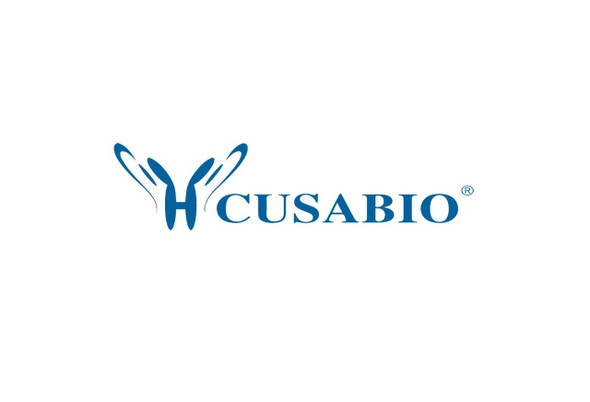Cusabio Other Organism Recombinants
Recombinant Human immunodeficiency virus type 1 group M subtype B Virion infectivity factor (vif) | CSB-YP303185HKM
- SKU:
- CSB-YP303185HKM
- Availability:
- 25 - 35 Working Days
Description
Recombinant Human immunodeficiency virus type 1 group M subtype B Virion infectivity factor (vif) | CSB-YP303185HKM | Cusabio
Alternative Name(s): SOR protein
Gene Names: vif
Research Areas: Others
Organism: Human immunodeficiency virus type 1 group M subtype B (isolate BRU/LAI) (HIV-1)
AA Sequence: MENRWQVMIVWQVDRMRIRTWKSLVKHHMYVSGKARGWFYRHHYESPHPRISSEVHIPLGDARLVITTYWGLHTGERDWHLGQGVSIEWRKKRYSTQVDPELADQLIHLYYFDCFSDSAIRKALLGHIVSPRCEYQAGHNKVGSLQYLALAALITPKKIKPPLPSVTKLTEDRWNKPQKTKGHRGSHTMNGH
Source: Yeast
Tag Info: N-terminal 6xHis-sumostar-tagged
Expression Region: 1-192aa
Sequence Info: Full Length
MW: 38.5 kDa
Purity: Greater than 90% as determined by SDS-PAGE.
Relevance: Counteracts the innate antiviral activity of host APOBEC3F and APOBEC3G. Forms a complex with host APOBEC3F and APOBEC3G thus preventing the entry of these lethally hypermutating enzymes into progeny virions. Recruits an active E3 ubiquitin ligase complex composed of elongin BC, CUL5, and RBX2 to induce polyubiquitination of APOBEC3G and APOBEC3F. In turn, they are directed to the 26S proteasome for degradation. Vif interaction with APOBEC3G also blocks its cytidine deaminase activity in a proteasome-independent manner, suggesting a dual inhibitory mechanism. May interact directly with APOBEC3G mRNA in order to inhibit its translation. Seems to play a role in viral morphology by affecting the stability of the viral nucleoprotein core. Finally, Vif also contributes to the G2 cell cycle arrest observed in HIV infected cells.
Reference: "Implication of the lymphocyte-specific nuclear body protein Sp140 in an innate response to human immunodeficiency virus type 1." Madani N., Millette R., Platt E.J., Marin M., Kozak S.L., Bloch D.B., Kabat D. J. Virol. 76:11133-11138(2002)
Storage: The shelf life is related to many factors, storage state, buffer ingredients, storage temperature and the stability of the protein itself. Generally, the shelf life of liquid form is 6 months at -20?/-80?. The shelf life of lyophilized form is 12 months at -20?/-80?.
Notes: Repeated freezing and thawing is not recommended. Store working aliquots at 4? for up to one week.
Function: Counteracts the innate antiviral activity of host APOBEC3F and APOBEC3G. Forms a complex with host APOBEC3F and APOBEC3G thus preventing the entry of these lethally hypermutating enzymes into progeny virions. Recruits an active E3 ubiquitin ligase complex composed of elongin BC, CUL5, and RBX2 to induce polyubiquitination of APOBEC3G and APOBEC3F. In turn, they are directed to the 26S proteasome for degradation. Vif interaction with APOBEC3G also blocks its cytidine deaminase activity in a proteasome-independent manner, suggesting a dual inhibitory mechanism. May interact directly with APOBEC3G mRNA in order to inhibit its translation. Seems to play a role in viral morphology by affecting the stability of the viral nucleoprotein core. Finally, Vif also contributes to the G2 cell cycle arrest observed in HIV infected cells.
Involvement in disease:
Subcellular Location: Host cytoplasm, Host cell membrane, Peripheral membrane protein, Cytoplasmic side, Virion
Protein Families: Primate lentivirus group Vif protein family
Tissue Specificity:
Paythway:
Form: Liquid or Lyophilized powder
Buffer: If the delivery form is liquid, the default storage buffer is Tris/PBS-based buffer, 5%-50% glycerol. If the delivery form is lyophilized powder, the buffer before lyophilization is Tris/PBS-based buffer, 6% Trehalose, pH 8.0.
Reconstitution: We recommend that this vial be briefly centrifuged prior to opening to bring the contents to the bottom. Please reconstitute protein in deionized sterile water to a concentration of 0.1-1.0 mg/mL.We recommend to add 5-50% of glycerol (final concentration) and aliquot for long-term storage at -20?/-80?. Our default final concentration of glycerol is 50%. Customers could use it as reference.
Uniprot ID: P69721
HGNC Database Link: N/A
UniGene Database Link: N/A
KEGG Database Link: KEGG
STRING Database Link: N/A
OMIM Database Link: N/A









